Still life masterpiece from private collection leads Bonhams Classics sale
PARIS.- Still life with a basket of fruit, seashells and a lizard by the German master Jacob Marrel leads The Classics sale at Bonhams Cornette de Saint Cyr in Paris on Wednesday 19 April 2023. It is estimated at €30,000-50,000.
Lot 52. Jacob Marrel (Frankenthal 1614-1681 Frankfurt-am-Main), Still life with a basket of fruit, seashells and a lizard, signed with monogram 'JM* f' (lower right, possibly strengthened), oil on panel, 74 x 49cm (29 1/8 x 19 5/16in). Estimate: €30,000-50,000. Photo: Bonhams.
Provenance: With Julius Böhler, Munich, 1981, where purchased by the present owner
Note: Jacob Marel was apprenticed to the Frankfurt still life artist Georg Flegel until he moved to Utrecht in the early 1630s and trained under Jan Davidsz. de Heem. Here he also came under the influence of the Bosschaert family and Roelandt Savery, all of whom were active in Utrecht at that time. The basket, shells and fruit in the present work are clearly inspired by Balthazar van der Ast's still life, from circa 1635, now in Vancouver Art Gallery, Canada (inv.no. 83.27), which may have been painted before the artist left for Delft.
Marrel moved to Frankfurt in 1650 and tutored Abraham Mignon, for whom he later arranged training in Utrecht with de Heem. He continued to travel between Utrecht and Frankfurt throughout his life, forming an important link between two early centres of interest in flower painting.
The painting forms part of a fine private European collection which also includes:
Lot 59. A pair of Louis-Philippe ormolu twelve-light sphinx candelabra, circa 1830, in the manner of Thomire & Cie.; 39cm wide, 113cm high (15in wide, 44in high). Estimate: €30,000-50,000. Photo: Bonhams.
Each with quiver-shaped support cast with spirally turned olive foliate branches surmounted by two rows of each six lights issuing from palmettes, the scrolling branches terminating in palmette nozzles, headed by a flaming finial, and on scrolling tripartite base with addorsed sphinxes on a concave-fronted triangular base with tip-leaf motif border and on a white marble socle.
Note: These exceptional candelabra are not signed, but correspond to the later production of one of the most celebrated bronzier fondeur-ciseleur, Pierre-Philippe Thomire (1751-1843). Thomire had his own atelier after working for the renowned bronzier Pierre Gouthière (1732-1813) and with ciseleur-doreur du roi Jean-Louis Prieur (d.circa 1785-1790). Famed for his production of finely-chased gilt-bronze objets de luxe, a large quantity of which were commissioned by the Crown, Thomire frequently collaborated with Marchands Merciers such as Simon-Philippe Poirier and Dominique Daguerre. In 1809, Thomire was made ciseleur de l'Empereur by Napoléon, his firm becoming fournisseur de leurs Majestés in 1811. Having produced an unparalleled oeuvre, Thomire relinquished control of his business to his sons-in-law in 1823. The firm, came to be known as: Thomire et Cie and remained successful throughout the Restauration, before ceasing to trade in 1852.
It is interesting to note that a pair of large scale candelabra by Denière using the similar decorative repertoire as the tripartite base with winged griffins instead of sphinxes, and closely related palmette branches were delivered to the Palais des Tuileries in 1832, see Marie-France Dupuy-Baylet, L'Heure le Feu La Lumière, Les Bronzes du Mobilier National 1800-1870, Dijon, p.210, pp.280-281, n.153. Various related versions of these candelabra by Denière are conserved in the Garde-Meuble National, most of these were used at the Palais des Tuileries.
Furthermore, the exact same design for the tripartite sphinx base to our candelabra is reproduced by Jean-Nicolas-Louis Durand in his Recueil et parallèle des édifices de tout genre, anciens et modernes, published in Paris, 1799-1801, pl.75: 'Détails romains. Autels, trépieds, candélabres, lampes, meubles', recueil is in the bibliothèque des Arts décoratifs, Paris.
Lot 50. A Louis XV ormolu-mounted Meissen porcelain, Vincennes flowers and tôle peinte clock garniture with matching pair of three branch figural candelabra, mid-18th century and later; . Estimate: €10,000-15,000. Photo: Bonhams.
The porcelain mid-18th century, the ormolu probably mid-18th century and later, the circular enamelled dial signed 'DE SAINT JEAN A PARIS' within a circular case and foliate surround, mounted with figure of a singer flanked by a group with sheep, on a rocaille pierced stepped and balustrated base, issuing a naturalistic branch with tole leaves and polychrome flowers; the pair of candelabra with Meissen figures of gardeners watering flowers, the tôle branches mounted with Vincennes-style porcelain flowers and terminating in foliate drip-pans and conforming nozzles, the clock: 41cm high, 26cm wide, 17cm deep (16in high, 10 1/4in, 6 3/4in deep); the candelabra: 26cm high, 28cm wide, 14cm deep (10 1/4in high, 11in wide, 5 1/4in deep) (some restoration to book in her hand and sheep, overall in very good condition, some minor chips to extremities) (3)
Provenance: With Röbbig, Munich, from where purchased by the present owner.
Note: This garniture, as with the ormolu-mounted figures also offered in this sale (lot 53), was created around the middle of the 18th century to supply a craving for the latest fashion of a new clientèle of buyers in the luxury market. They were furnished in every whim and demand by a group of Marchands Merciers active in mainly Paris. They were importers and dealers, but also interior designers and decorators, with a reach that extended to imported Chinese porcelain, exotic fabrics and the rarest of materials. Paris offered perfect conditions for a booming business, not least through its proximity to the most fashionable court in Europe. The main source of income for many Marchands did not principally come through the Court and its entourage, but through those aspiring to follow the newest fashion introduced by the French King and his family. The Marchands Merciers played a key role in the promotion of French art and luxury far beyond the French borders.
This garniture, as with the ormolu-mounted figures also offered in this sale (lot 53), was created around the middle of the 18th century to supply a craving for the latest fashion of a new clientèle of buyers in the luxury market. They were furnished in every whim and demand by a group of Marchands Merciers active in mainly Paris. They were importers and dealers, but also interior designers and decorators, with a reach that extended to imported Chinese porcelain, exotic fabrics and the rarest of materials. Paris offered perfect conditions for a booming business, not least through its proximity to the most fashionable court in Europe. The main source of income for many Marchands did not principally come through the Court and its entourage, but through those aspiring to follow the newest fashion introduced by the French King and his family. The Marchands Merciers played a key role in the promotion of French art and luxury far beyond the French borders.
For further reading on Meissen porcelain mounted in France see: V. Bastien/S. Castelluccio/S. Vris et al., La Fabrique du Luxe, Les Marchands Merciers Parisiens au XVIIIe Siècle, exhibition catalogue (2018) and M. Deldique (ed.), La Fabrique de l'Extravagance, Porcelaines de Meissen et de Chantilly (2020).Orders at the Meissen factory by French Marchands Merciers in Paris are discussed in detail by J. Weber, Von Moskau bis Lissabon, von Dublin bis Konstantinopel. Der Handel mit Meissener Porzellan im 18. Jahrhundert (1719-1773), in Keramos 212 (2016), where the author discusses the orders placed at the factory, the French and other European dealers involved, and the lists of orders following the Arbeitsberichte.
• Lot 55. A four-colour gold snuff box by Dominique François Poitreau, Paris, 1759-1760; 8.5cm wide. Estimate: €20,000-25,000. Photo: Bonhams.
Of oval form, applied and chased with trophies of hunting, music and love, within shaped reserves, maker's mark charge and discharge mark of Eloy Brichard/Etienne Somfoye, 1756–1762, French eagle head control mark, 1847-1919, struck twice; the rim later engraved: G À Paris.
Nette Megens, Bonhams Director of Decorative Arts for Europe and UK, said: “This exquisite collection demonstrates a great eye for quality and artistry, and I am anticipating a lot of interest from collectors.”
Other highlights of the sale, which consists of 169 lots, include:
Lot 66. A very rare set of twenty-one Meissen 'Cris de Paris' figures, circa 1755. Estimate: €50,000-70,000. Photo: Bonhams.
Modelled by Peter Reinicke after drawings by Christophe Huet of 1753, comprising: crier with a magic lantern, the spirits seller, the pipe and drum player, the female fish vendor, the oyster seller, the hurdy-gurdy player, the grape seller, the orange seller, the peasant with a cradle, the vegetable seller, the triangle player, the violinist, the flower seller, the lemon seller, the liquorice-water seller, the cook with a stove, the lemonade seller, the egg seller, the horn player, the crier with chicks (later-decorated) and the poultry chef, after 1760, 14-15cm high, crossed swords marks in underglaze-blue and blue, various impressed numerals (scattered restoration) (21)
Provenance: Private German Collection of Meissen Porcelain
Literature: Martin Eberle, Cris de Paris Meissener Porzellanfiguren des 18. Jahrhunderts (2001): no. 23 (the flower seller), no. 25 (crier with chicks), no. 28 (lemonade seller), no. 29 (cook with stove), no. 32 (triangle-player), no. 33 (hurdy-gurdy player), no. 35 (crier with drum and whistle), no. 36 (crier with horn), no. 37 (vegetable seller), no. 38 (crier with cradle), no. 39 (fish seller), no. 43 (spirit seller), no. 44 (liquorice-water seller), no. 47 (orange-seller);
U. Pietsch/C. Banz, Triumph der blauen Schwerter (2010), cat. no. 436 (crier with magic lantern)
Exhibited: Leipzig, Gohliser Schlößchen, 'Sachsens Gold im Schlößchen', 29 April-10 June 2001 (as above Literature);
Dresden, Japanese Palace, 'Triumph der blauen Schwerter. Meissener Porzellan für Adel und Bürgertum 1710-1815', 8 May-29 August 2010 (crier with magic lantern)
Lot 19. An impressive and very large silver-gilt nef, probably, Hanau, circa 1900; 115cm high; 85cm wide; 33cm deep, gross weight: 13960g.. Estimate: €7,000-10,000. Photo: Bonhams.
1In the 17th century style, typically formed as a three-mast galleon in full sail on a figurative support stylised as Triton above Hippocampi and embossed dolphins to the shaped circular base, traces of hallmark.
Provenance: Property from a Royal Collection.
Lot 4. A Deruta maiolica albarello, circa 1500-1510; 23.5cm high, 14 cm diam.. Estimate: €15,000-20,000. Photo: Bonhams.
Previously attributed to Siena by Dr Chompret, of cylindrical slightly waisted shape, decorated with a drug label reading TRiFeN a MAGN a, over a Moor's head roundel and under an apothecary label of PAQ and ecclesiastical cross, all set on stylised floral motifs in blue against an ochre ground, in turn surrounded by a stiff leaf border held together in four places with yellow ribbons, the reverse with two gothic scrolls.
Note: This albarello is part of a group of albarelli decorated with a Moor's head. One example from the collection of Dr Chompret was most recently sold at Pecheteau Badin (31 May 2022, lot 17) and there are other examples in international museum collections including the Philadelphia Museum of Art, the Boymans van Beuningen Museum in Rotterdam, the Victoria and Albert Museum and the British Museum in London.
About ten albarelli of the same dimensions as our albarello as well as a chevrette, undated, belong to a group slightly later than the series dated 1501. Six albarelli of this set were part of the former Pringsheim collection (Otto von Falke, Die Majolikasammlung Alfred Pringsheim in München (1914), cat.nos. 113-115). One of them is now in the Musée National de la Céramique and reproduced by Jeanne Giacomotti, Les majoliques des Musées nationaux, 1972, cat.no. 416.
Lot 1. Workshop of Joos van Cleve (Cleves circa 1485-circa 1540 Antwerp), The Madonna and Child, oil on panel, 47.2 x 32cm (18 9/16 x 12 5/8in). Estimate €22,000-28,000. Photo: Bonhams.
Note: Formerly attributed to Jan Gossaert called Mabuse by Pierre M. Blanc (a copy of the expertise accompanies the lot), the present Madonna and the Child, was clearly a very popular composition by Joos Van Cleve as attested to by the numerous versions produced by the artist's workshop. Similar versions were formerly at the Ehrich Galleries, New York; The American Art Association, New York, The Achillito Chiesa collection and Artcurial, Paris, on 16 June 2020, lot. 220.
(see also M. Friedländer, Early Netherlandish Painting, (Leiden-Brussels, 1924) vol. IXa, p. 62, no. 55).
Lot 47. Two rare Louis XV Gobelins tapestries from the Don Quixote series, one dated 1757 by Michel Audran, the other dated 1764, by Pierre-François Cozette, after a design by Charles Antoine Coypel, part of the sixth weaving of the series; 361.5cm x 283cm (11.86ft x 9.28ft) and 361cm x 275.5cm (11.84ft x 9.03ft). Estimate €60,000 - €80,000. Photo: Bonhams.
Provenance: Commissioned by Abel-François Poisson de Vandières, Marquis de Marigny, Surintendent et Directeur des Batiments du Roi;
Sold as part of a larger set to Madame Veron on 4 July 1783 (Don Quixote knighted by the innkeeper delivered on 27th November, 1764), thence by inheritance to;
Louis Grégoire Veron, Receveur Général des Finances de France-Comté in 1780;
Richard Seymour-Conway, 4th Marquess of Hertford, by 1865, thence to his son;
Sir Richard Wallace, sold at Christie's London, 20 April 1876, lot 210;
Baron de Gunzbourg, sold to Paul Chevalier, Galerie Georges Petit, Paris, 30 January 1884, lots 3 and 4 respectively;
Clarence H. Mackay by 1926, thence by descent to his daughter, Mrs Robert Z.Hawkins, 1958;
English private collectionBoth woven in wool and silk, the first entitled 'The False Princess Micomicon asking Don Quixote to Restore her to her Throne', the central cartouche showing the young female in typical dress with elaborate plumed headdress, her turbaned companion kneeling behind her, two figures peeking out from behind a tree, a rocky landscape in the distance, the text to the bottom of the flowering frame reading LA FAUSSE PRINCESSE MICOMICON, VIENT PRIER DOM QUICHOTTE DE LA REMETTRE SUR LE THRÔNE, the second tapestry entitled 'Don Quixote made a Knight by the Inn Keeper,' the central cartouche showing the main figure of Don Quixote in his armour, kneeling before the inn-keeper who is adorned with a pluming red hat, two figures, one female and one youth standing behind him, two maidens holding the military attributes of Don Quixote behind the kneeling knight, a young woman to the foreground drawing water from the well, dressed in a red dress, the text below to the flowering frame reading DOM QUICHOTTE FAIT CHEVALIER, PAR L'HOSTE, DE HOTELLERIE both scenes are set within a central reserve with scrolling foliate and frame, headed by a peacock, and flanked by ribbon-tied foliate swags, above bursting cornucopiae and military trophies, within a frame border, resting on a base with armour and an axe, flags and cornucopiae, flanked by a spaniel and a ram, the corners with interlaced L's, on blue oval medallions, the former signed and dated UDRAN. G. 1757' with a fleur-de-lys to the dark blue outer slip with signature, the latter signed and dated 'Cozette 1764' to the lower right field, and signed COZETTE on the blue outer slip, minor wear to outer slip
Exhibited: Paris, Palais de l'Industrie, Exhibition de l'Union centrale des Beaux-Arts appliqués à l'industrie, 1865 (loaned by Lord Hertford who lent the pieces to the Musée Rétrospectif Exhibition)
Note: This magnificent series was woven nine times - between 1714 and 1794 - with six different alentours (borders), resulting in approximately 200 panels over the course of 80 years. The initial manufacture of the series was overseen by Robert Cotte, the Royal Architect in Chief and Gobelins director (1656-1735) and the Duc d'Antin, Surintendant des Batiments du Roi (1708-1736), who received the first set, which consisted of 16 panels (see below).
The producion and distribution of the series in the 18th century is complex, but dates of the first few sets are thought to be as follows:
The first set for the Duc D'Antin in 1717 (sold at Christie's London, 10th June 1993);
The second set consisted of 12 panels, a gift from Louis XV to the Spanish Ambassador;
The third set was woven in 1733;
The fourth set, woven at some point between 1746-49, consisted of twelve pieces (sold as a whole to the Duke of Parma and currently in Turin);
The fifth set included thirty panels;
The sixth set (the present lot) originally consisted of 23 panels and is thought to have been woven between 1757-64;
The seventh set consisted of 14 panels;
The eighth set had a phenomenal 67 tapestries woven to make up the set.
A set of this series with a red background was woven between 1772-1785 and given to Albert and Marie-Christine, Duke and Duchess of Saxe Teschen in 1786. Four of these are now at the J.Paul Getty Museum (acc.no 82.DD.66-69). Four tapestries from the series were presented on 18 July 1788 by Louis XVI to the artist Richard Cosway as a sign of gratitude for the four tapestry cartoons by Giulio Romano depicting the history of Scipio, which Cosway had presented to the King for display in the Louvre. Cosway gave his set to George IV shortly afterwards and they were hung in Carlton House until 1823, when they were moved to Buckingham Palace (inv.RCIN 3190-94).
A Royal Commission 'Presents from the King to Princes and Ambassadors'
Don Quixote (or 'The Ingenious Gentleman Don Quixote of La Mancha), captured the 17th century European noble imagination as translations permeated the various courts and libraries of the upper échelons of society. These tapestries are of particular importance because they represent a change in artistic subject matter at the Gobelins factory. There was a noticeable shift from depictions of stories of military subjects and classical mythology to lighter and occasionally, frivolous scenes.
Charles Coypel (1694-1752), painter to Louis XV, created 28 cartoons for the Gobelins manufactory. He received 200 livres for each design. The paintings on which the present lot are based date to 1716 and 1714 (as panels 6 and 0 respectively). 'Don Quixote knighted by the Innkeeper' was the first painting of the series to be presented at the Gobelins factory and set the tone for the rest of the panels.
These specific borders, (or alentours) occur for the first time in these tapestries. Some scholars have argued that these borders, which are credited to Jean Baptiste Belin de Fontenay, have just as much iconographic significance as the scenes depicted in the central cartouches. For this set the borders form part of the fifth version of the weaving, which was a variant of the second. That version was a joint effort of Audran and Fontenay under Coypel. The fifth version, only used until 1760, was executed by Vallade who was supervised by Coypel and supplied to Audran in 1751.
We know that the Duc D'Antin had wanted new paintings from Coypel and wider hangings so under Coypel a new alentour was designed, mainly using the work of Claude Audran. The piles of armour and flags to the bottom were enlarged, some books added and additional animals including a monkey.
The first set of these tapestries were commissioned by the Duc d'Antin, who, when he could not pay for the set, said it was intended for the King. The sets thereafter were essentially crown controlled and overseen by different directors of the Gobelins factory over the course of the 18th century. As Fenaille observes, it was clear that the weavers of Gobelins produced 'stock' tapestries from which selections which could be made by the King at any time for any purpose. As Garnier d'Isle wrote in 1752: 'Cette tenture a la commodité de pouvoir estre separée en autant et si peu de pièces que l'on veut, et d'autant plus convenable a fair des présents du roy aux princes ou aux ambassadeurs'
A set of Don Quixote tapestries was given by Louis XV to Count Vorontsov around 1758 and was used as an ambassadorial tool to 'tilt' Russia to the French side during the war. Catherine the Great noticed the gesture and commented that the king 'by way of a bribe had furnished a house in St Petersburg with old furniture which had belonged to Madame de Pompadour'.
Abel-François Poisson de Vandières, Marquis de Marigny and the Don Quixote Tapestries
The Marquis de Marigny, Surintendant et Directeur des Bâtiments du Roi and brother of Madame de Pompadour, was appointed Director of the Gobelins manufactory in 1752 and commissioned the set that included the present lot.
The set originally included 23 panels and 6 overdoor panels. Four of these were given by Louis XV to Count Vorontsov, and a further six were sold to the Guard of the Royal Treasury and a single panel was gifted to Madame de Monmartel in 1767. Eight panels were given to Charles Henri Poussin in 1773 as part payment for furnishing Versailles and Fontainebleau, and the remaining four (including the present lot) to Madame Veron in 1763. It is known that Madame Veron swapped one of the initial four for the 'Don Quixote Knighted by the Innkeeper', for an additional fee of 599 livres. The four panels then passed to Louis Grégoire Veron, Receveur Général des Finances de France-Comté. They then entered the legendary collections of the 4th Marquess of Hertford before being sold -in 1867 by Christie's- by his heir, Sir Richard Wallace. They were described in the catalogue as:
Three splendid sets of Beauvais and Gobelins Tapestries' they were all from famous series including Four Gobelins panels with the Royal cipher in the corners and with similar subjects on yellow ground.'
The four tapestries remained together until 1958, when they were in the collection of Clarence Mackay's daughter and subsequently split into two pairs, the other pair depicting 'Sancho's Entry,' and 'Sancho's Cowardice'.
Two recent exhibitions have focussed solely on this remarkable series:
Don Chisciotte, tra Napoli, Caserta e il Quirinale: I Cartoni e gli Arazzi, Naples, Palazzo Reale, 19 May-6 September 2022
Coypel's Don Quixote Tapestries: Illustrating a Spanish Novel in Eighteenth-Century France, New York, Frick Collection, 25 February – 17 May 2015.

/https%3A%2F%2Fprofilepics.canalblog.com%2Fprofilepics%2F1%2F0%2F100183.jpg)
/https%3A%2F%2Fstorage.canalblog.com%2F03%2F02%2F119589%2F96711876_o.jpg)
/https%3A%2F%2Fstorage.canalblog.com%2F11%2F31%2F119589%2F94773502_o.jpg)
/https%3A%2F%2Fstorage.canalblog.com%2F20%2F83%2F119589%2F94772815_o.jpg)
/https%3A%2F%2Fstorage.canalblog.com%2F26%2F72%2F119589%2F75604929_o.jpg)
/https%3A%2F%2Fstorage.canalblog.com%2F59%2F60%2F119589%2F26458628_o.jpg)





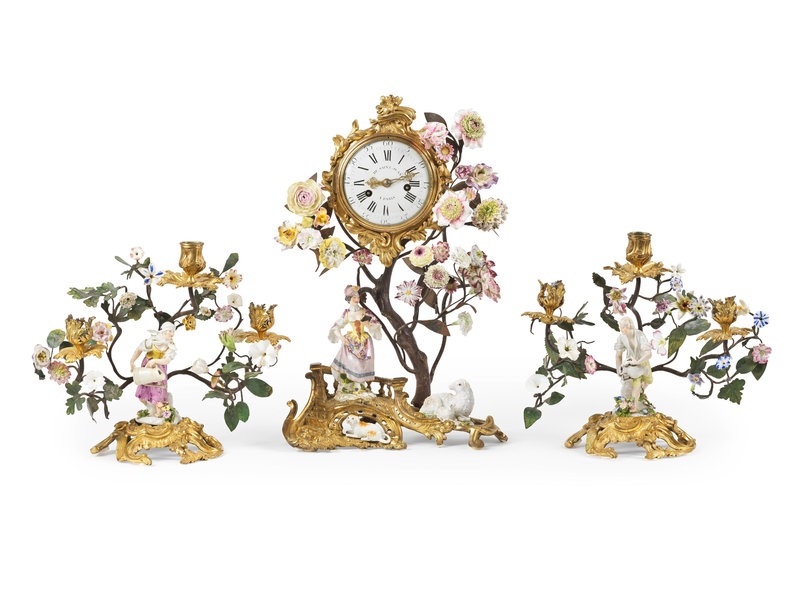

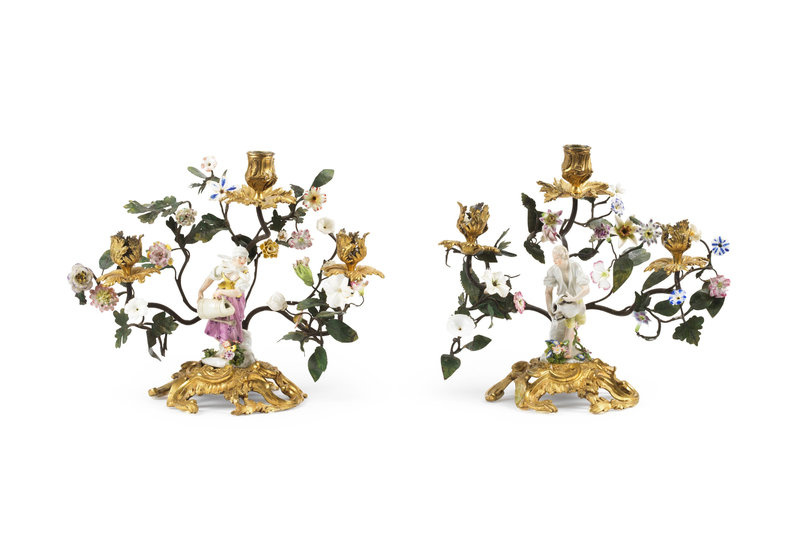
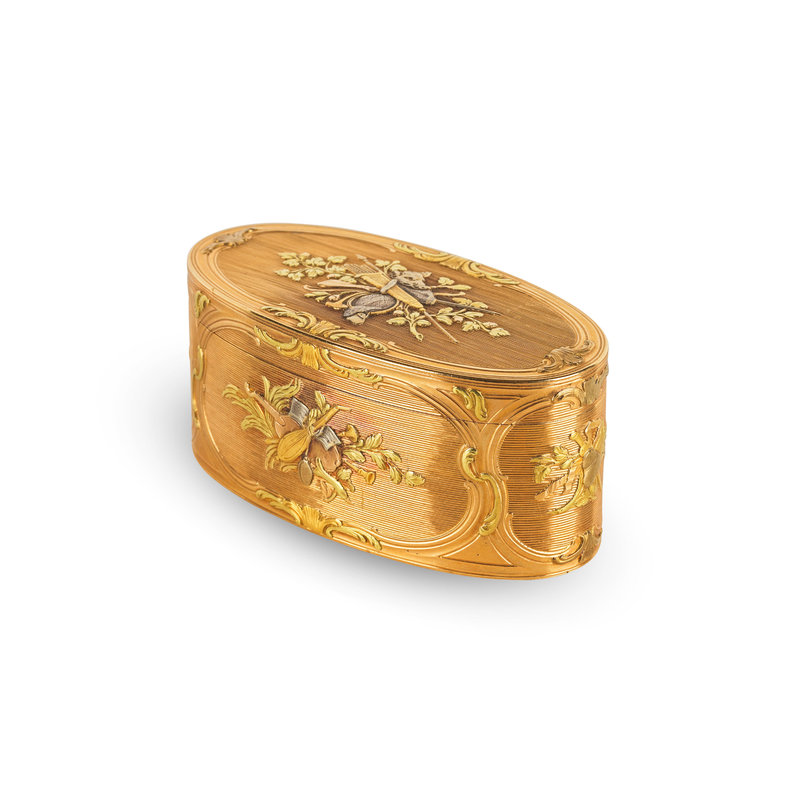

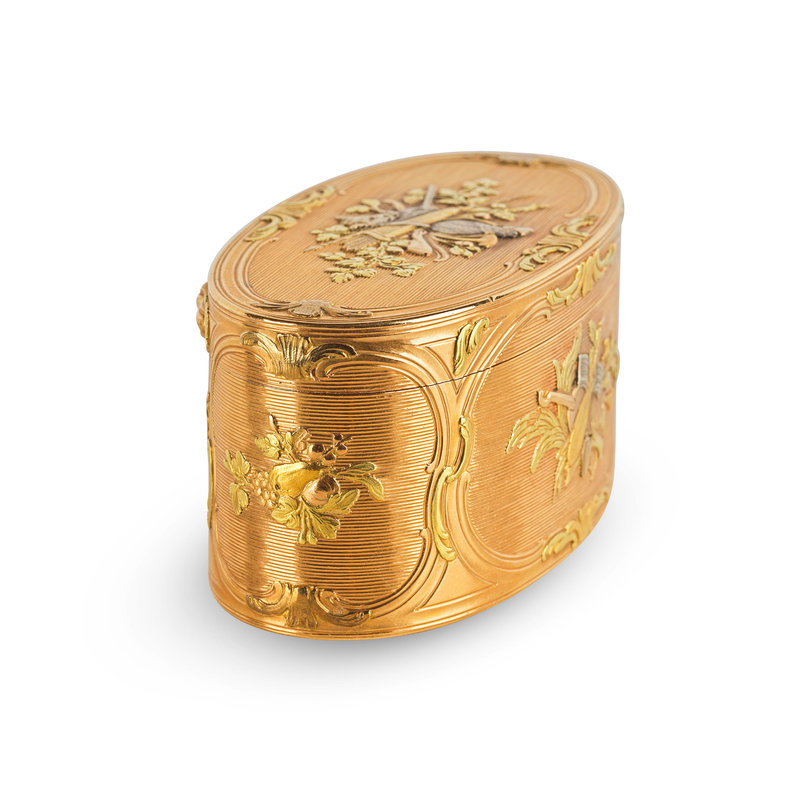
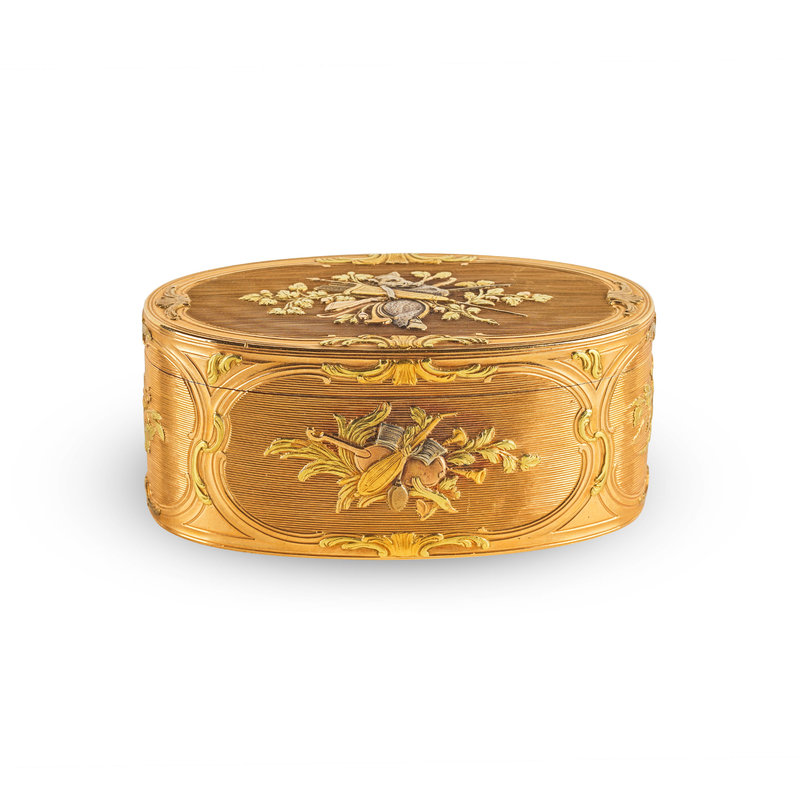
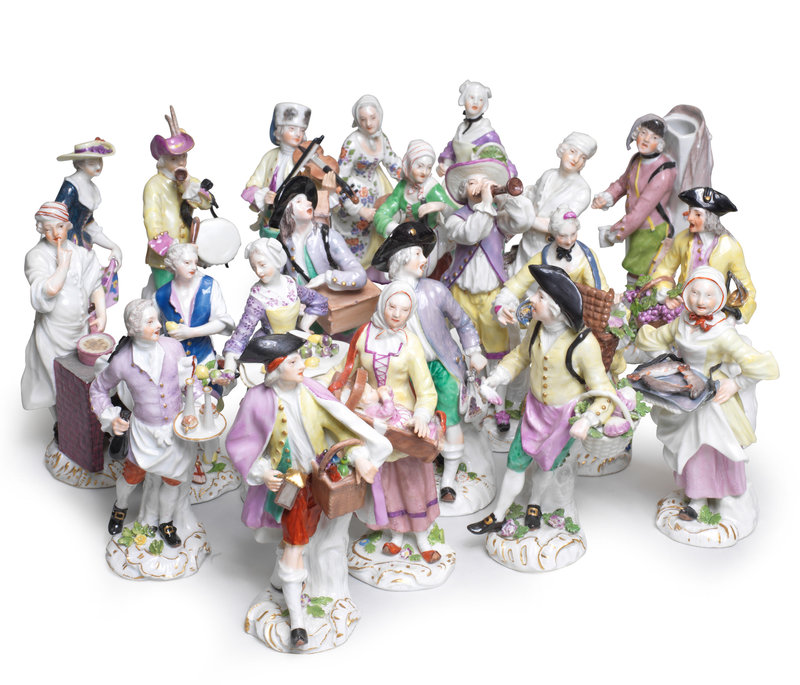
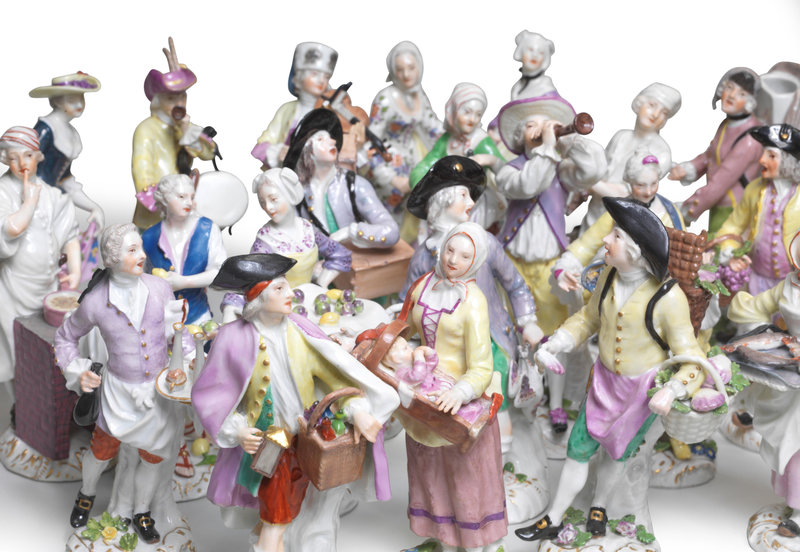

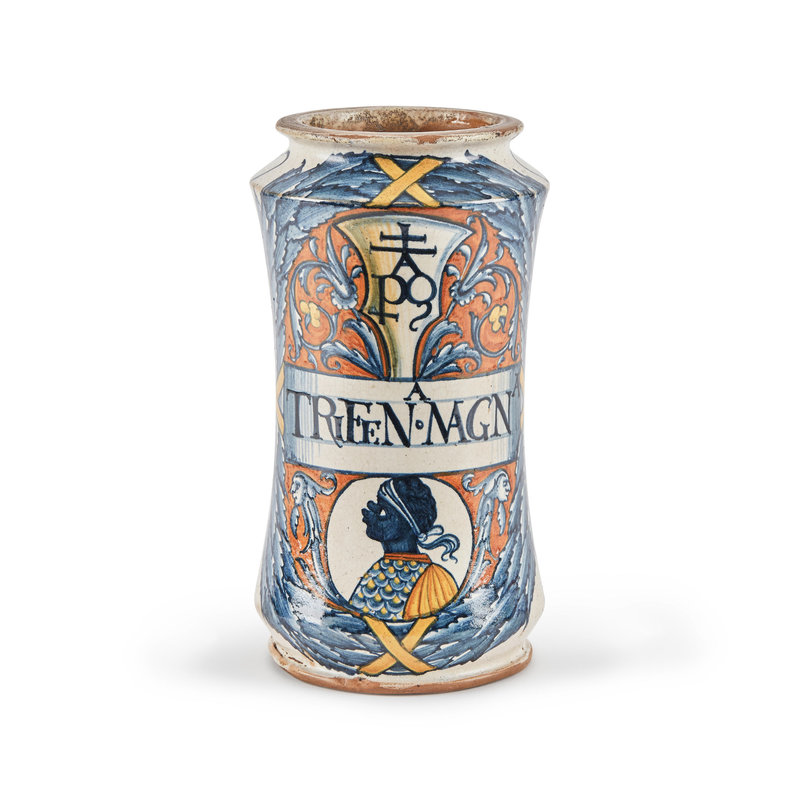

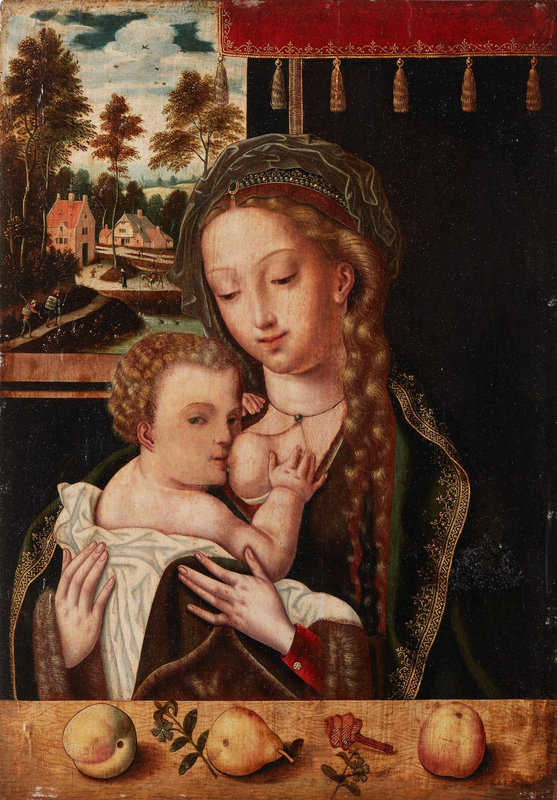
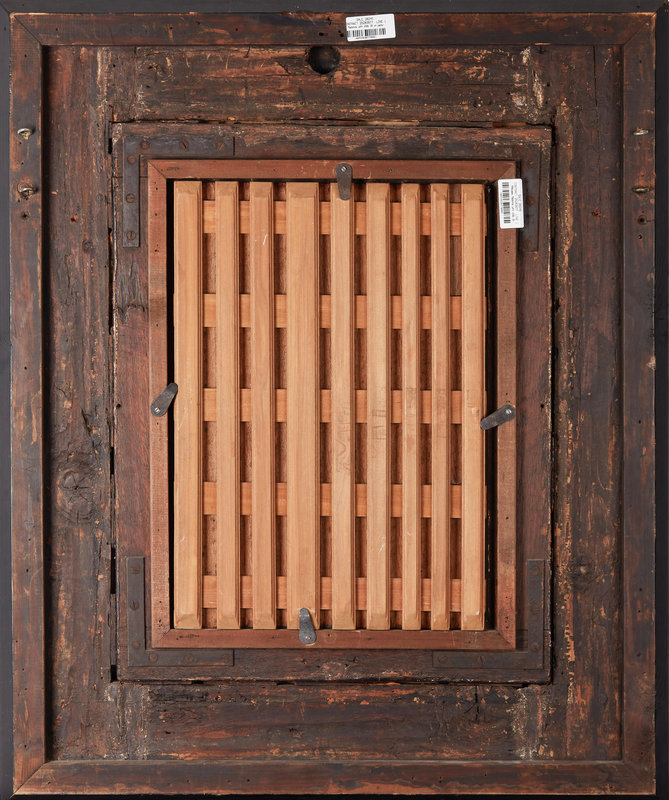
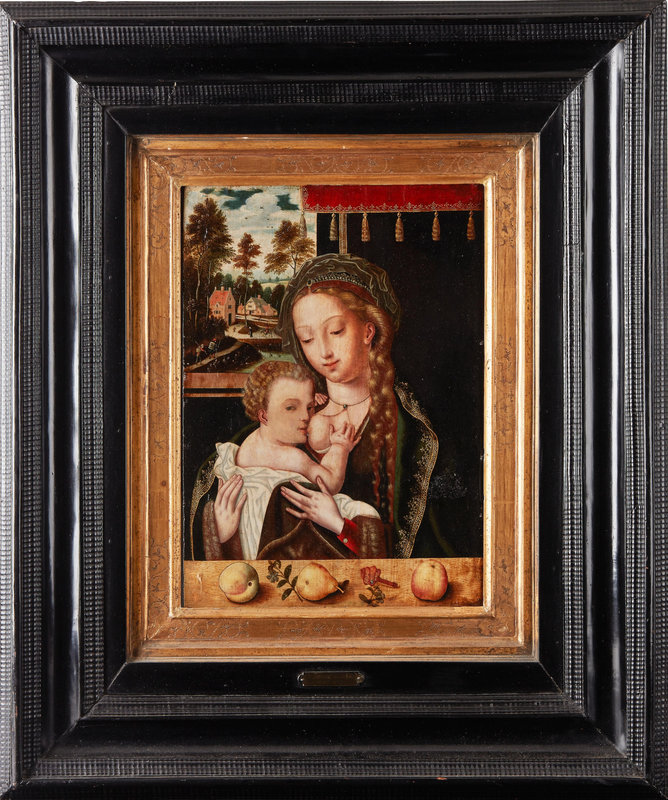

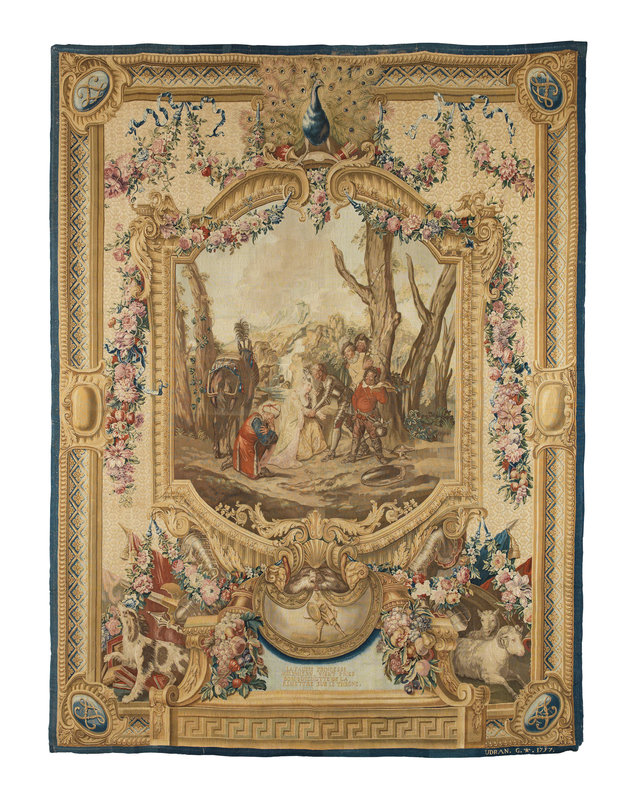
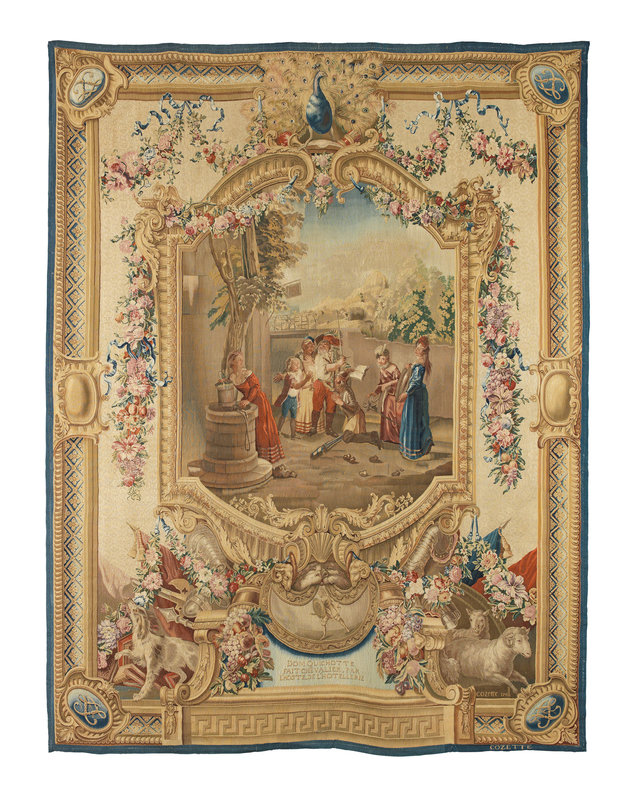


/image%2F1371349%2F20240312%2Fob_183045_431914962-1632264750876871-38629381506.jpg)
/image%2F1371349%2F20240311%2Fob_14e107_ed6d3066-e26f-4652-b29e-33e89de2fe09.jpg)
/image%2F1371349%2F20240311%2Fob_2b18d7_7c6f5ff1-5d4b-4485-8335-919ff9cd27e02.jpg)
/http%3A%2F%2Fwww.sothebys.com%2Fcontent%2Fdam%2Fsothebys-pages%2Fblogs%2FSlideshow%2F2018%2FApril%2F38-OMP-Caravaggio-still-life.jpg)